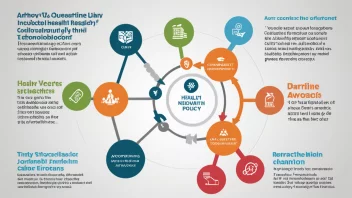Introduction
Gender disparities in the workforce remain a pressing issue worldwide, affecting economic growth, innovation, and social equity. Despite significant progress in recent decades, women continue to face barriers in terms of pay, promotions, and representation in leadership roles. To effectively address these disparities, policymakers must implement targeted strategies that promote gender equality in the workplace. Below are five key policy recommendations that can help bridge the gender gap in the workforce.
1. Implement Comprehensive Paid Family Leave Policies
Overview: Paid family leave policies support both parents during critical life events, such as childbirth or caring for a sick family member. By providing paid leave, governments can encourage both men and women to take time off without jeopardizing their financial stability.
- Benefits: This policy not only promotes gender equality by normalizing paternity leave but also supports women’s career advancement by allowing them to return to work without penalty.
- Example: Countries like Sweden and Norway have implemented successful paid family leave policies that have resulted in higher female participation in the workforce.
2. Promote Gender Diversity in Leadership Positions
Overview: Increasing the representation of women in leadership roles is crucial for creating equitable workplaces. Policymakers can encourage businesses to adopt diversity targets and provide incentives for achieving them.
- Benefits: Diverse leadership teams are linked to improved decision-making and performance, as they bring varied perspectives to the table.
- Example: The 30% Club, a global campaign, encourages companies to aim for at least 30% women on boards, leading to tangible changes in corporate governance.
3. Enhance Access to Affordable Childcare Services
Overview: Access to affordable and quality childcare is essential for working parents, particularly mothers, who often bear the brunt of childcare responsibilities. Policymakers should invest in childcare infrastructure and subsidies.
- Benefits: Affordable childcare enables parents to return to work sooner and pursue career advancement, thus reducing the gender gap in employment.
- Example: Countries like France and Denmark have robust childcare systems that support working families, resulting in higher female labor force participation rates.
4. Enforce Equal Pay Legislation
Overview: Ensuring equal pay for equal work is fundamental to achieving gender equality in the workforce. Policymakers should strengthen existing pay equity laws and promote transparency in salary structures.
- Benefits: Equal pay legislation not only benefits women but also contributes to overall economic growth by maximizing the potential of the entire workforce.
- Example: The Equal Pay Act in the United States has paved the way for various initiatives aimed at closing the gender pay gap, although further enforcement is necessary.
5. Support Women in STEM Fields
Overview: Women are underrepresented in science, technology, engineering, and mathematics (STEM) fields. Policymakers can promote initiatives that encourage girls and women to pursue careers in these areas.
- Benefits: Increasing the number of women in STEM not only helps to close the gender gap but also drives innovation and economic growth in sectors that are critical for the future.
- Example: Programs like Girls Who Code and initiatives funded by the National Science Foundation aim to inspire young women to enter STEM fields.
Conclusion
Addressing gender disparities in the workforce requires a multifaceted approach that involves comprehensive policy changes. By implementing paid family leave, promoting gender diversity in leadership, enhancing access to childcare, enforcing equal pay, and supporting women in STEM, policymakers can create a more equitable workforce. These strategies not only benefit women but also contribute to a more robust economy and a fairer society.






